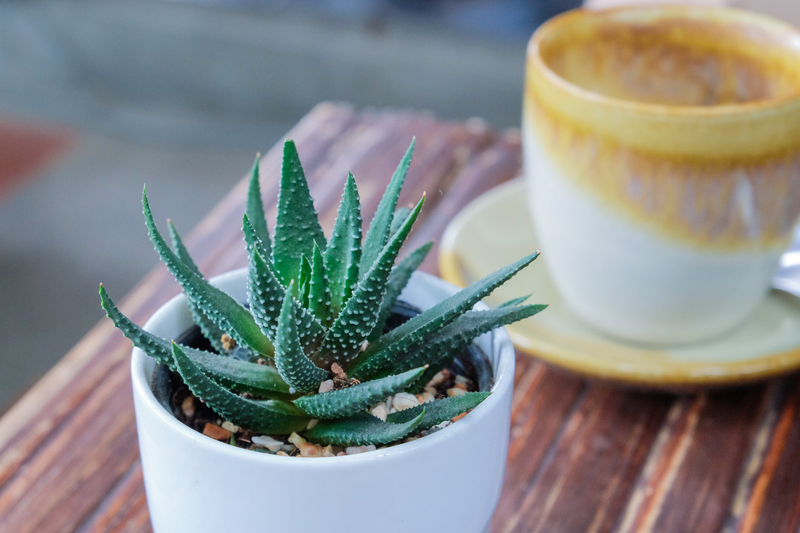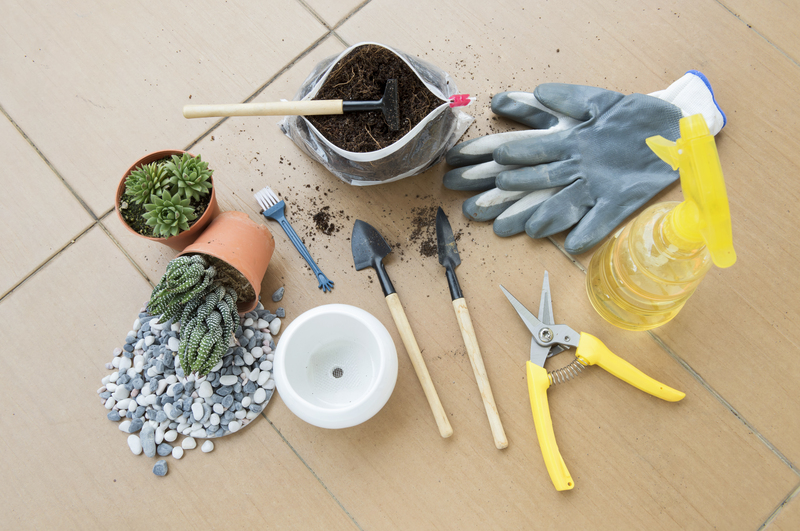Cultivating Beautiful Orchids at Home
Posted on 02/06/2025
Cultivating Beautiful Orchids at Home: The Ultimate Guide
Orchids are renowned for their exquisite beauty, exotic blooms, and remarkable diversity. If you want to cultivate stunning orchids at home, you've come to the right place. Whether you're an experienced gardener or a total beginner, this comprehensive article will provide expert tips, step-by-step instructions, and best practices for growing beautiful orchids indoors. Discover everything you need to know about choosing, planting, and caring for various orchid species right in your own home.
Why Choose Orchids for Home Cultivation?
- Exquisite Beauty: Orchids offer a vast array of colors, shapes, and sizes. Their unique blooms make them a prized addition to any indoor space.
- Long-Lasting Blooms: Many orchids bloom for weeks or even months with proper care.
- Low Maintenance (With Knowledge): Once you understand their needs, orchids are surprisingly easy to maintain.
- Air Purifying: Like other houseplants, orchids can enhance air quality at home.
- Wide Range of Species: There are over 25,000 varieties of orchids--some perfect for beginners, others for more advanced enthusiasts.

Most Popular Orchids for Home Cultivation
Not all orchids are equally easy to grow indoors. When starting out, consider these popular types:
- Phalaenopsis (Moth Orchid):
- *Best for beginners*
- Frequent, long-lasting blooms
- Thrives in household conditions
- Cattleya:
- Known for large, fragrant flowers
- Prefers bright, indirect sunlight
- Dendrobium:
- *Hardy and easy to care for*
- Comes in diverse species and hybrids
- Oncidium (Dancing Lady Orchid):
- Features stunning yellow flowers
- Loves lots of light and regular watering
Essential Supplies for Growing Orchids at Home
Before you purchase your first plant, assemble these essential orchid care tools:
- Orchid pots: Choose pots with ample drainage holes. Clear plastic pots help monitor root health and moisture.
- Potting mix: Specialized orchid bark or sphagnum moss provides the right balance of aeration and moisture.
- Humidity tray: Elevating pots over a tray of water adds environmental humidity without risking root rot.
- Fertilizer: Purchase a balanced, water-soluble fertilizer specifically formulated for orchids.
- Water sprayer: Useful for misting leaves and keeping humidity levels up.
- Sharp, sterilized pruning shears: Essential for trimming roots and old flower spikes.
Choosing the Right Environment for Your Orchids
The secret to cultivating perfect orchids at home lies in recreating their natural habitat. Orchids are mostly tropical plants, so they thrive in warmth, humidity, and filtered light.
Light Requirements
- Bright, Indirect Light: Most household orchids flourish in indirect light. South or east-facing windows are ideal.
- Too Much Sun: Direct sunlight can scorch leaves, causing yellowing or brown burns.
- Too Little Light: Low light results in poor flowering, dark leaves, and leggy growth.
- *Tip: If natural light is insufficient, use grow lights designed for indoor plants.*
Humidity and Temperature
- Optimal Temperature: 65-80?F (18-27?C) during the day; slightly cooler at night (by 10?F/5?C).
- Humidity: Orchids love 40-60% relative humidity. Use a humidifier or place your orchid pot on a humidity tray.
- Air Circulation: Good airflow prevents fungal disease. Never crowd your orchids--you want space between leaves and pots.
Step-by-Step Guide: How to Grow Orchids Indoors
1. Potting Your Orchid
- Choose the right pot: Select a clear plastic or slotted orchid pot to ensure good drainage.
- Use specialty media: Fill with orchid bark, coconut husk, or sphagnum moss instead of standard potting soil.
- Gently remove old media: Tease roots free from any peat or moss the plant came in--rinsing gently with lukewarm water.
- Position the plant: Center the orchid in the pot. Fill around the roots, but avoid packing tightly.
2. Watering Your Orchids
- Check moisture before watering: Only water when the top inch of the potting medium is dry.
- Frequency: Typically once per week for bark or every 7-10 days for moss. Factors include temperature and humidity.
- Method: Drench the pot thoroughly (sink soak or let water drain freely). Avoid letting water sit at the base.
- *Tip: Underwatering is safer than overwatering. Orchids hate 'wet feet'.*
3. Fertilizing Orchids
- Type: Use a balanced (20-20-20) fertilizer, diluted to half or a quarter of the strength listed on the package.
- Frequency: Fertilize every 2-4 weeks during active growth. Withhold or reduce fertilization during dormancy.
- Flush the pot: Once a month, rinse pots thoroughly with pure water to remove accumulated salts.
4. Repotting Orchids
- When: Repot every 1-2 years, or when the potting mix breaks down.
- Why: Old media can harbor pests and diseases, suffocating roots.
- How: Remove the plant from the old pot, clip dead or rotting roots, and replant in fresh media.
- *Note: Repotting often stimulates new root and leaf growth.*
Troubleshooting Common Orchid Problems
- Wrinkled or leathery leaves: Typically caused by under-watering or root rot. Check roots and adjust watering.
- Yellowing leaves: May result from overwatering, direct sun exposure, or nutrient deficiencies.
- Brown leaf tips: Often indicate low humidity or fertilizer burn.
- Pest infestations: Watch for scale, mealybugs, or aphids. Treat affected plants with neem oil or insecticidal soap.
- No blooms: Orchids are sensitive to lighting. Try increasing light exposure or allowing a drop in nighttime temperature for a few weeks to encourage blooming.
Best Practices for Orchid Enthusiasts
- Observe your plant: Every species of orchid has slightly different needs. Observe leaf color, root health, and flowering cycles.
- Keep orchids clean: Wipe leaves with a damp cloth to remove dust.
- Don't over-fertilize: More is not better. Always dilute and fertilize less frequently than most houseplants.
- Reward patience: Orchids may take months (or longer) to rebloom, but patience pays off with spectacular displays.
- Join a community: Local orchid societies and online forums are great places to swap tips and trade plants.
Creating Stunning Orchid Displays at Home
Orchids make elegant, statement pieces in any room. Follow these design ideas to showcase your blooms:
- Single showpiece: Feature a single Phalaenopsis on a decorative table or mantelpiece.
- Grouped miniatures: Arrange several smaller orchids in matching pots on a tray for a lush, tropical look.
- Hanging displays: Mount epiphytic orchids like Dendrobiums or Vandas in hanging baskets for a striking vertical garden.
- Terrariums: Smaller varieties such as jewel orchids or Ludisia can thrive in terrarium environments.
Frequently Asked Questions About Cultivating Orchids at Home
How much sunlight do homegrown orchids need?
Most orchids prefer bright but indirect light. Direct sun (especially midday) can burn leaves. East-facing windows offer gentle morning sun that's ideal for many varieties.
Can orchids be grown indoors year-round?
Yes! With steady temperature, adequate light, and humidity, orchids can thrive and bloom indoors throughout the year. Just remember to adjust watering routines in response to seasonal changes in light and air moisture.
Is it difficult to get orchids to rebloom?
It can be a challenge, especially for beginners, but it's not impossible. The keys are patience and consistency: give them the right light, drop the temperature slightly at night, and don't overwater. Some varieties may rest before forming new flower spikes.
Do indoor orchids attract pests?
Pests are rare if you monitor your plants regularly and provide proper care. Keep plants spaced apart for air circulation and isolate new arrivals for a week to prevent the spread of bugs.

Advanced Orchid Care: Going Beyond the Basics
Once you've mastered basic orchid cultivation at home, try these advanced techniques for even more vibrant blooms:
- Experiment with different species: Graduate from beginner-friendly Phalaenopsis to more exotic genera like Paphiopedilum (Slipper Orchids) or Miltoniopsis (Pansy Orchids).
- Pollination and hybridization: Advanced growers sometimes create their own hybrids through patient cross-pollination efforts.
- Multiple growth environments: Build a small orchidarium for species needing higher humidity and light.
- Propagation: Learn to divide established clumps or grow keikis (baby plants) on flower spikes for expanding your collection.
The Joy of Cultivating Beautiful Orchids at Home
Cultivating orchids at home is a rewarding hobby that combines artistic expression and scientific care. Whether you're nurturing a single plant or building a tropical collection, understanding your plant's needs is the key to success. With patience and the right knowledge, anyone can enjoy lush, long-lasting blooms that brighten their living space and spark conversation.
So why not begin your own orchid adventure today? With this complete guide to growing stunning orchids at home, you're ready to transform your indoor spaces into a vibrant and beautiful orchid sanctuary--one precious bloom at a time.

